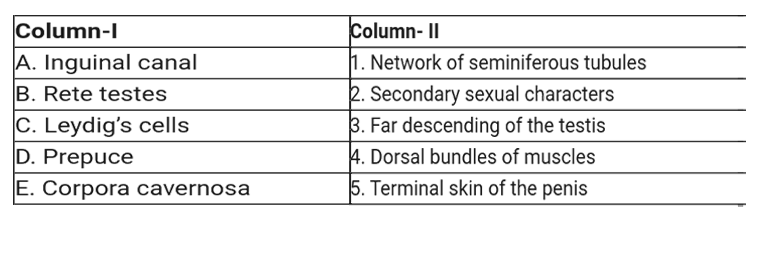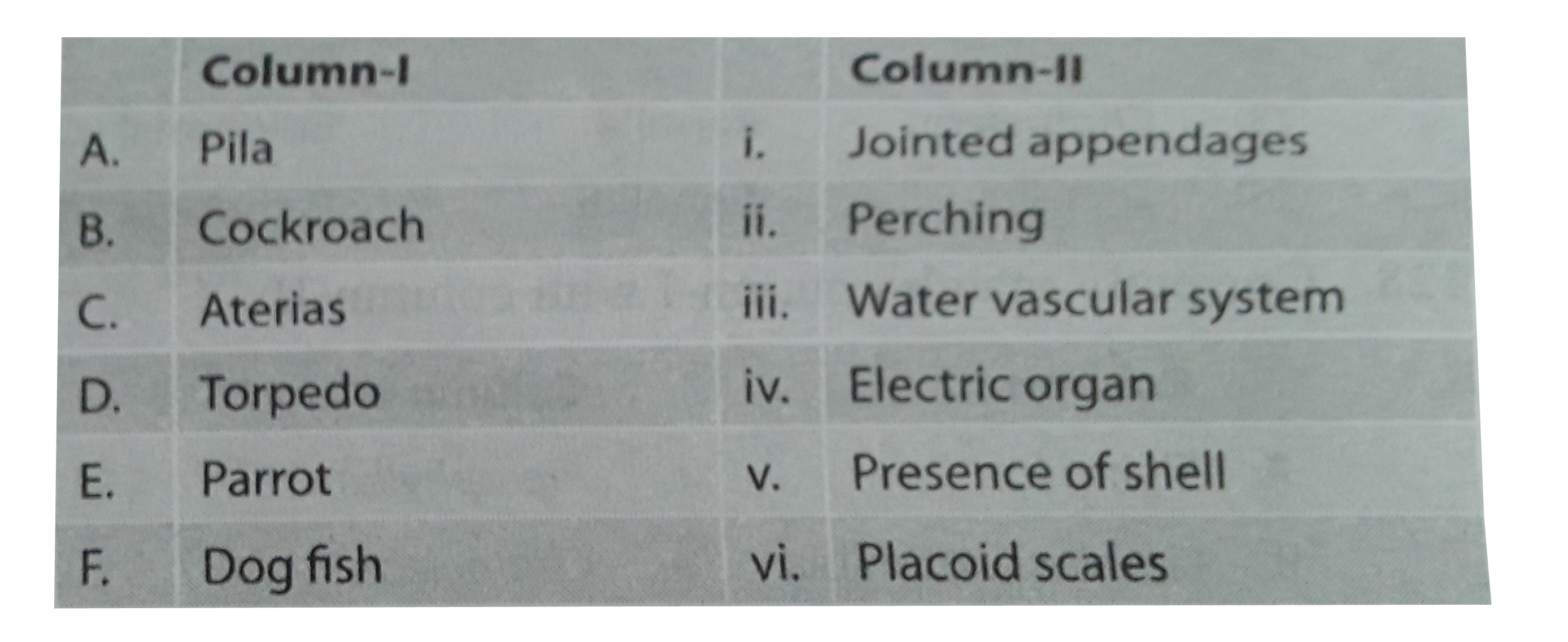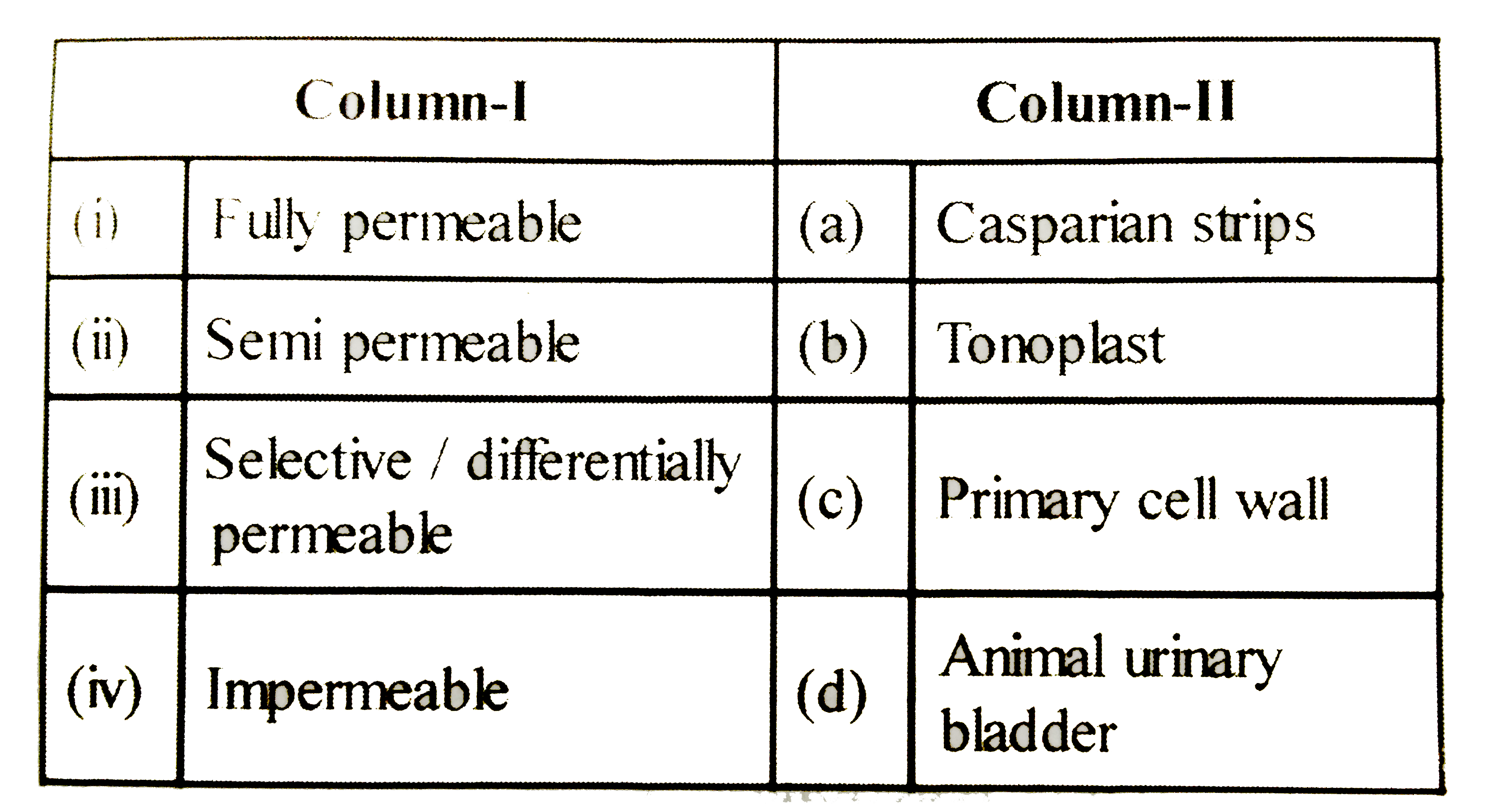Match the items in coumn I with column II and choose the correct option
Column IColumn IIABinary fission1 AlgaeBZoospore2 AmoebaCConidium3 HydraDBudding4 PenicilliumEGermules5 Sponge
ABCDE14532
ABCDE21435
ABCDE24351
ABCDE14325
The correct Answer is:B
To solve the matching question, we will analyze each item in Column I and match it with the correct item in Column II based on the modes of asexual reproduction and the organisms associated with them.
1. Binary Fission (A):
- Definition: A method of asexual reproduction where a single organism divides into two identical daughter cells.
- Organism: This method is primarily seen in Amoeba.
- Match: A → 2 (Amoeba)
2. Zoospore (B):
- Definition: A motile spore that uses flagella for movement, typically found in aquatic organisms.
- Organism: Zoospores are commonly associated with Algae.
- Match: B → 1 (Algae)
3. Conidium (C):
- Definition: Asexual spores that are produced by fungi, particularly in a structure called a conidiophore.
- Organism: This type of reproduction is characteristic of Penicillium.
- Match: C → 4 (Penicillium)
4. Budding (D):
- Definition: A form of asexual reproduction where a new organism develops from an outgrowth or bud on the parent organism.
- Organism: Budding is commonly seen in Hydra.
- Match: D → 3 (Hydra)
5. Gemmules (E):
- Definition: A form of asexual reproduction that involves the formation of a cluster of cells that can develop into a new organism, often seen in sponges.
- Organism: Gemmules are specifically associated with Sponges.
- Match: E → 5 (Sponge)
Final Matches:
- A → 2 (Amoeba)
- B → 1 (Algae)
- C → 4 (Penicillium)
- D → 3 (Hydra)
- E → 5 (Sponge)
Conclusion:
The correct option that matches these pairs is Option 2: 2, 1, 4, 3, 5.
- Definition: A method of asexual reproduction where a single organism divides into two identical daughter cells.
- Organism: This method is primarily seen in Amoeba.
- Match: A → 2 (Amoeba)
- Definition: A motile spore that uses flagella for movement, typically found in aquatic organisms.
- Organism: Zoospores are commonly associated with Algae.
- Match: B → 1 (Algae)
- Definition: Asexual spores that are produced by fungi, particularly in a structure called a conidiophore.
- Organism: This type of reproduction is characteristic of Penicillium.
- Match: C → 4 (Penicillium)
- Definition: A form of asexual reproduction where a new organism develops from an outgrowth or bud on the parent organism.
- Organism: Budding is commonly seen in Hydra.
- Match: D → 3 (Hydra)
- Definition: A form of asexual reproduction that involves the formation of a cluster of cells that can develop into a new organism, often seen in sponges.
- Organism: Gemmules are specifically associated with Sponges.
- Match: E → 5 (Sponge)
- A → 2 (Amoeba)
- B → 1 (Algae)
- C → 4 (Penicillium)
- D → 3 (Hydra)
- E → 5 (Sponge)
The correct option that matches these pairs is Option 2: 2, 1, 4, 3, 5.
Similar Questions
Knowledge Check
Match the column I with column II and choose the correct option
 A(a) ABCD1234B(b) ABCD4321C(c) ABCD1322D(d) ABCD2314
A(a) ABCD1234B(b) ABCD4321C(c) ABCD1322D(d) ABCD2314
Match the items in Columns- I with Column-II and choose the correct option.

View SolutionMatch the column I with column II and choose the correct option

View SolutionMatch column I with column II and choose the correct option.

View SolutionMatch the column -I with column -II and choose the correct option :

View SolutionMatch the column-I with column-II and choose the correct option :

View SolutionMatch the column-I with column-II and choose the correct option :

View SolutionMatch Column I with Column II and choose correct option

View Solution


